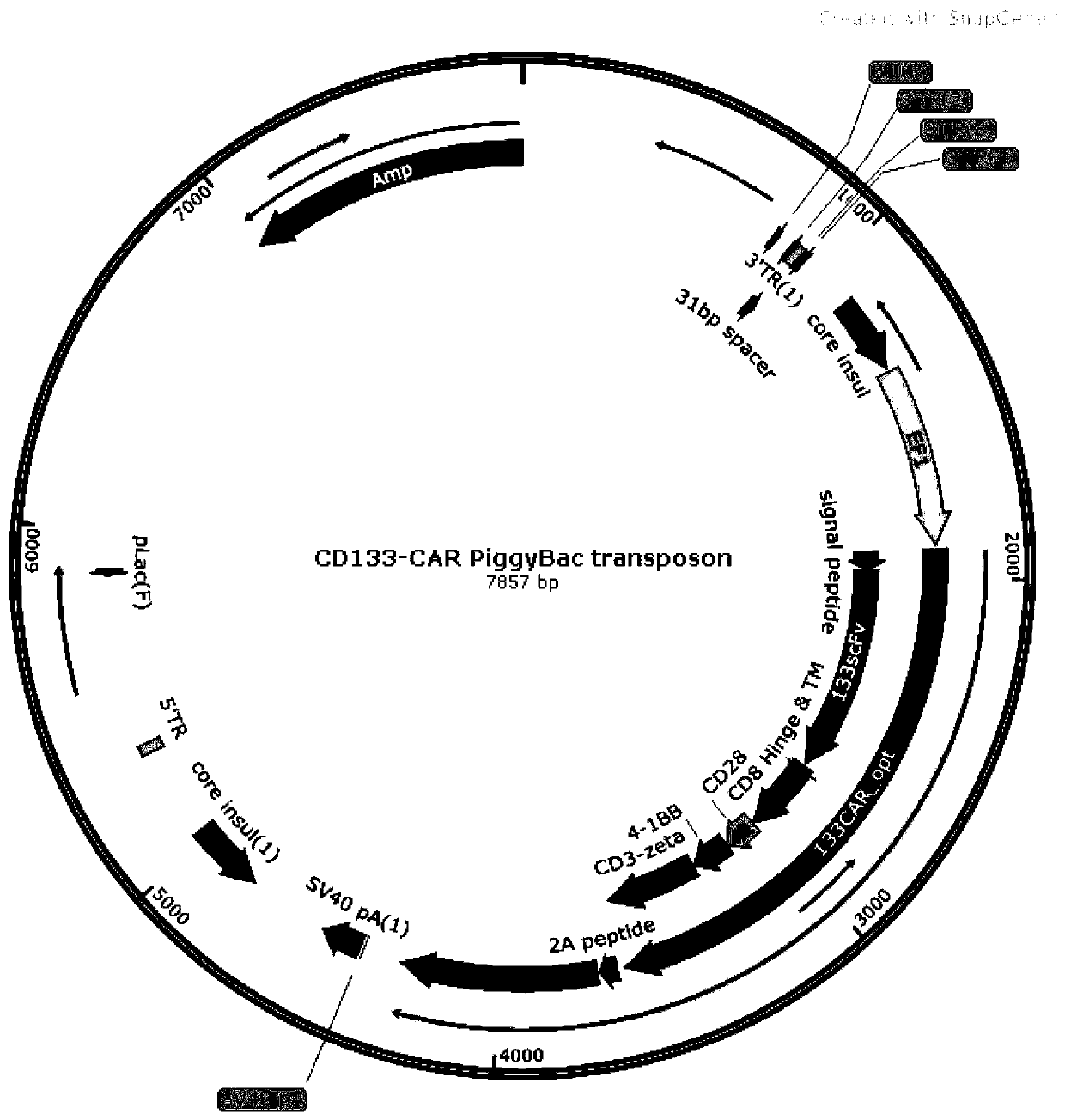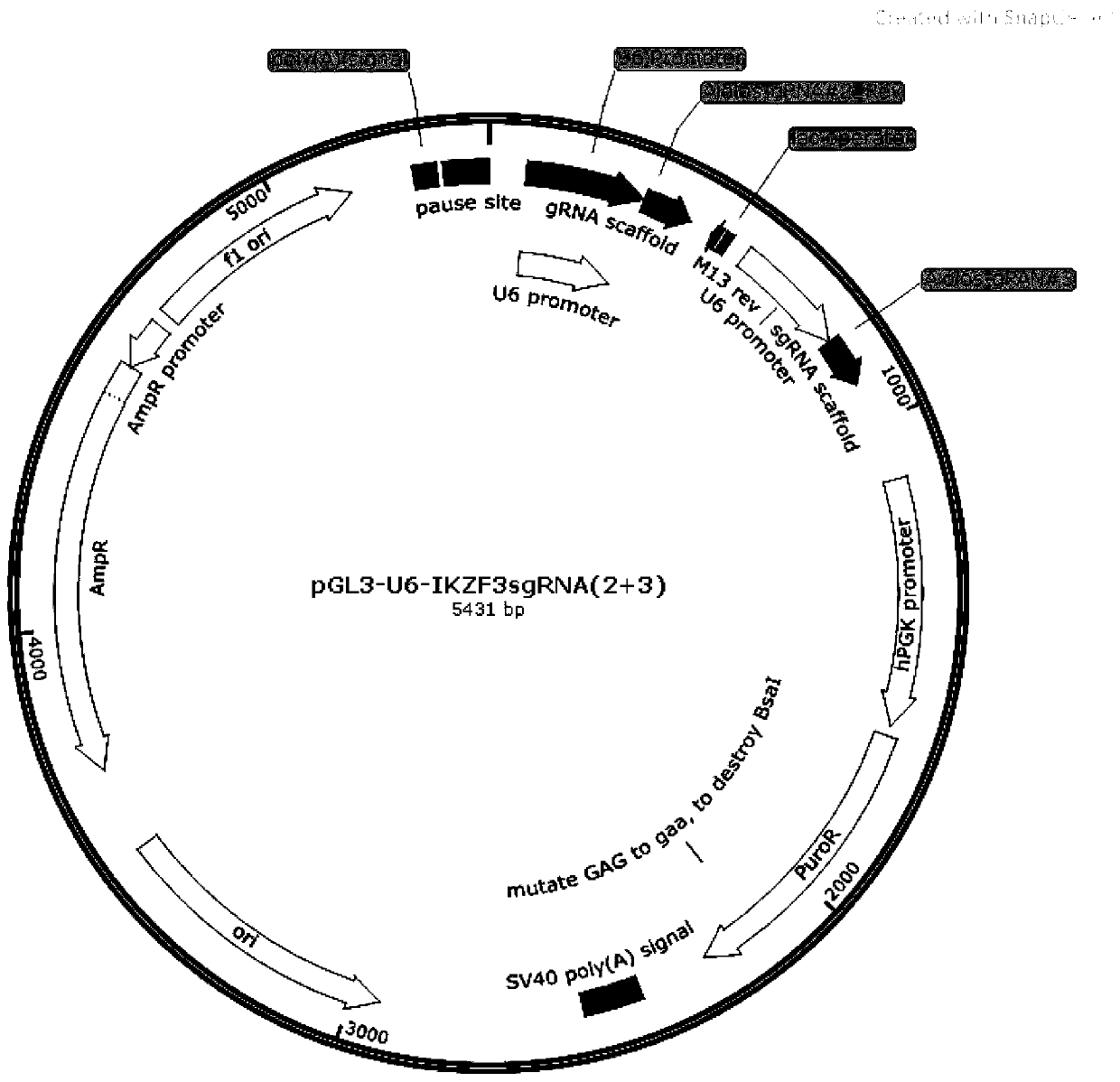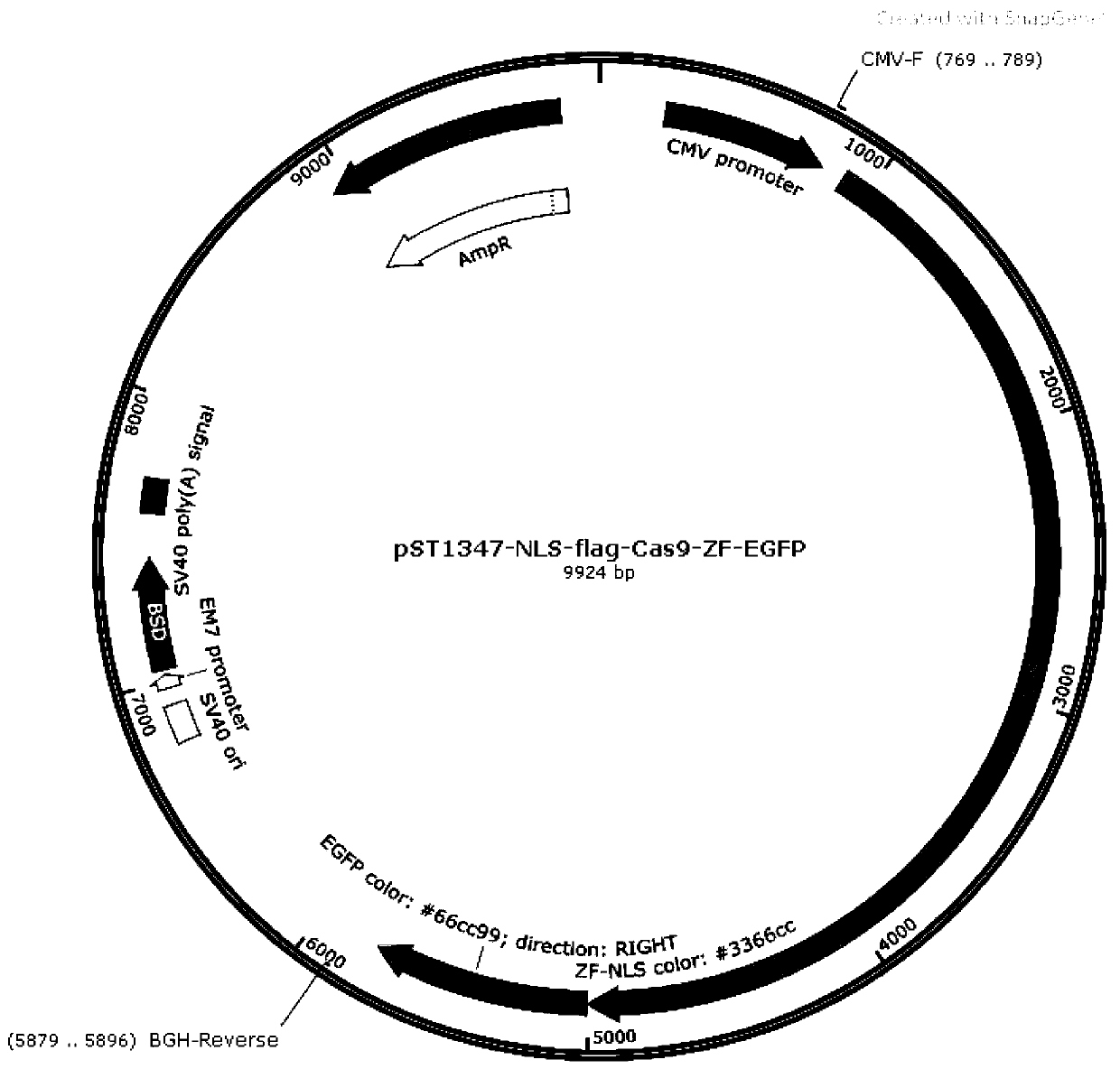IKZF3 gene-silenced T cells and application thereof
A gene silencing and cell technology, applied in tumor immunotherapy and biomedicine, can solve problems such as unclear influence of malignant tumors, and achieve high cell expansion multiples, long-term cell survival, and strong cell killing ability
- Summary
- Abstract
- Description
- Claims
- Application Information
AI Technical Summary
Problems solved by technology
Method used
Image
Examples
preparation example Construction
[0073] The method for preparing T cells or the method for increasing the activity of T cells of the present invention is to silence the IKZF3 gene of T cells.
[0074] Gene silencing refers to the phenomenon that a specific gene in an organism is not expressed or its expression is reduced.
[0075] Further, antisense RNA, antagomir, siRNA, shRNA, meganuclease (Meganuclease), zinc finger nuclease (ZFN), transcription activator-like effector nuclease (TALEN) or CRISPR system can be used to target the IKZF3 gene The target sequence silences the IKZF3 gene.
[0076] The target sequence in the IKZF3 gene is shown in SEQ ID NO:1.
[0077] In one embodiment, the aforementioned IKZF3 gene interference nucleic acid molecule, and / or the aforementioned IKZF3 gene interference nucleic acid construct, and / or the aforementioned IKZF3 gene interference lentivirus can be administered to T cells to reduce IKZF3 in T cells gene expression. Thereby preparing the T cells or improving the activ...
Embodiment 1
[0107] This example provides the design and synthesis of sgRNA for specifically targeting the IKZF3 gene in the CRISPR / Cas9 specific knockout of the human IKZF3 gene
[0108] 1. Design of sgRNA targeting human IKZF3 gene
[0109] (1) Select the sequence of 5'-N(21)GG on the IKZF3 gene.
[0110] (2) The targeting site of the sgRNA on the IKZF3 gene is located in the exon of the gene, which is more likely to cause the deletion of the fragment or the frame-shift mutation, so as to achieve the purpose of complete gene inactivation.
[0111] (3) The targeting site of sgRNA on IKZF3 gene is located on the common exon of different splicers.
[0112] (4) Use BLAT in the UCSC database or BLAST in the NCBI database to determine whether the target sequence of the sgRNA is unique and reduce potential off-target sites.
[0113] Based on the above principles, professionals in the field can design several sgRNAs targeting the human IKZF3 gene.
[0114] 2. Selection of sgRNA targeting huma...
Embodiment 2
[0131] Use CRISPR / Cas9 to specifically knock out the human IKZF3 gene (the sgRNA used to target the IKZF3 gene is shown in the sequence table as SEQ ID NO.2)
[0132] 1. The linearized sequence is the pGL3-U6-sgRNA plasmid shown in the sequence table SEQ ID NO.11.
[0133] Enzyme digestion system and conditions are as follows:
[0134] 2 μg pGL3-U6-sgRNA
[0135] 1μl CutSmart Buffer
[0136] 1 μl BsaI (NEB, R0535V)
[0137] Replenish water to 50ul, incubate at 37°C for 3-4 hours, shake and centrifuge at regular intervals to prevent droplets from evaporating onto the tube cap. After the enzyme digestion is completed, use illustra GFX PCR DNA and Gel Band Purification Kits (GE, 28903470) to purify and recover to 20-50 μl sterilized water.
[0138] 2. The double-stranded sgRNA oligonucleotide (its Forward oligo and Reverse oligo sequences are respectively shown in sequence table SEQ ID NO.5, 6) obtained after denaturation and annealing can be connected into the U6 eukaryotic ...
PUM
 Login to View More
Login to View More Abstract
Description
Claims
Application Information
 Login to View More
Login to View More - R&D
- Intellectual Property
- Life Sciences
- Materials
- Tech Scout
- Unparalleled Data Quality
- Higher Quality Content
- 60% Fewer Hallucinations
Browse by: Latest US Patents, China's latest patents, Technical Efficacy Thesaurus, Application Domain, Technology Topic, Popular Technical Reports.
© 2025 PatSnap. All rights reserved.Legal|Privacy policy|Modern Slavery Act Transparency Statement|Sitemap|About US| Contact US: help@patsnap.com



